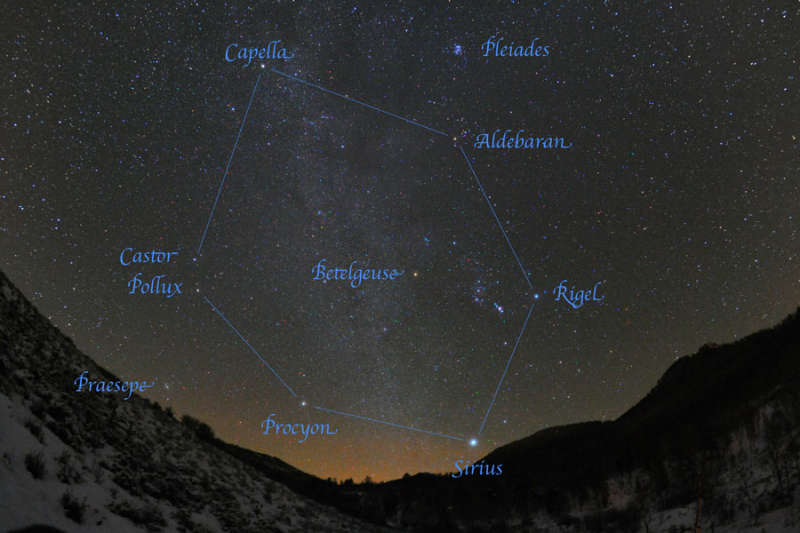
|
Credit & Copyright: Jimmy Westlake
(Colorado Mountain College)
Explanation:
If you can find Orion, you might be able to find the Winter Hexagon.
The Winter Hexagon involves some of the
brightest stars visible,
together forming a large and easily found
pattern in the
winter sky of
Earth's
northern hemisphere.
The stars involved can usually be identified even in the
bright night skies of a
big city, although here they appear over darker
Stagecoach,
Colorado, USA..
The six stars that compose the
Winter Hexagon are
Aldebaren,
Capella,
Castor (and
Pollux),
Procyon,
Rigel, and
Sirius.
Here, the band of our Milky Way Galaxy runs through the center of the
Winter Hexagon, while the
Pleiades open
star cluster is visible just above.
The Winter Hexagon
asterism engulfs several constellations including much of the
iconic steppingstone
Orion.
Best Astronomy Images:
APOD Editor to speak in Philadelphia and New York City this week
|
January February March April May June July August September October November December |
| |||||||||||||||||||||||||||||||||||||||||||||||||||||||
NASA Web Site Statements, Warnings, and Disclaimers
NASA Official: Jay Norris. Specific rights apply.
A service of: LHEA at NASA / GSFC
& Michigan Tech. U.
Based on Astronomy Picture
Of the Day
Publications with keywords: asterism - Sirius - Orion - aldebaran - pleiades
Publications with words: asterism - Sirius - Orion - aldebaran - pleiades
See also:
- APOD: 2025 April 8 Á Moon Visits Sister Stars
- APOD: 2025 March 5 Á Seven Sisters versus California
- APOD: 2025 January 27 Á Pleiades over Half Dome
- A December Winter Night
- APOD: 2024 December 9 Á Pleiades: The Seven Sisters Star Cluster
- APOD: 2024 September 29 Á Seven Dusty Sisters
- APOD: 2024 September 3 Á Quarter Moon and Sister Stars
